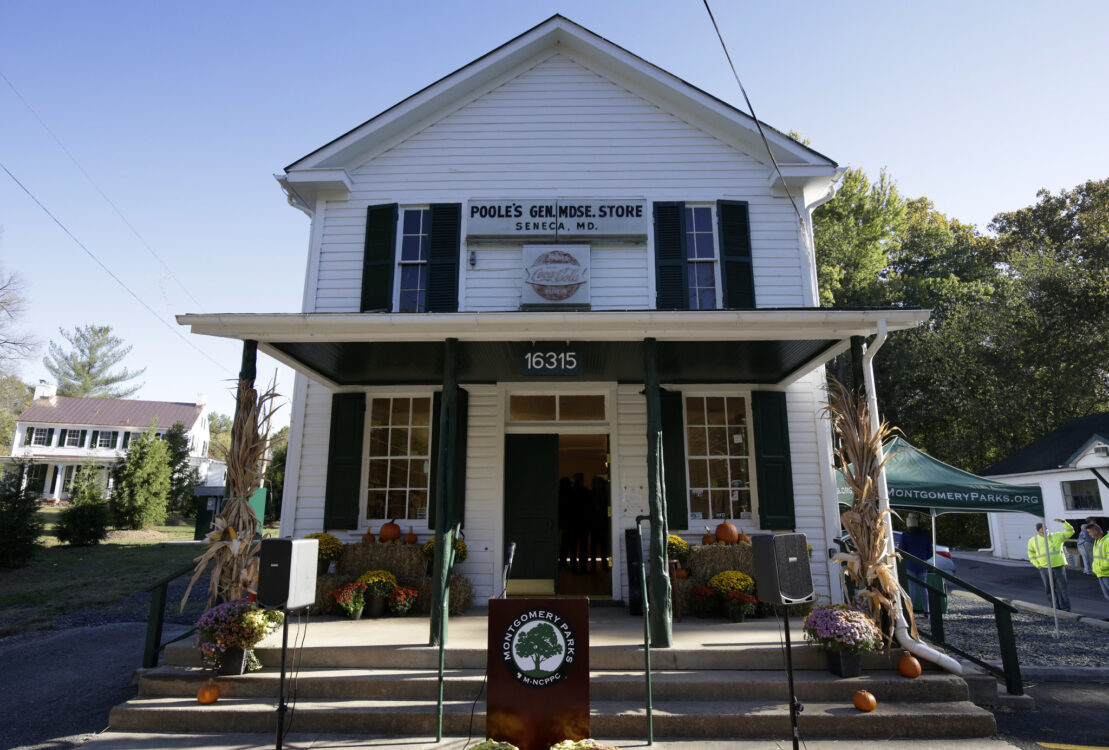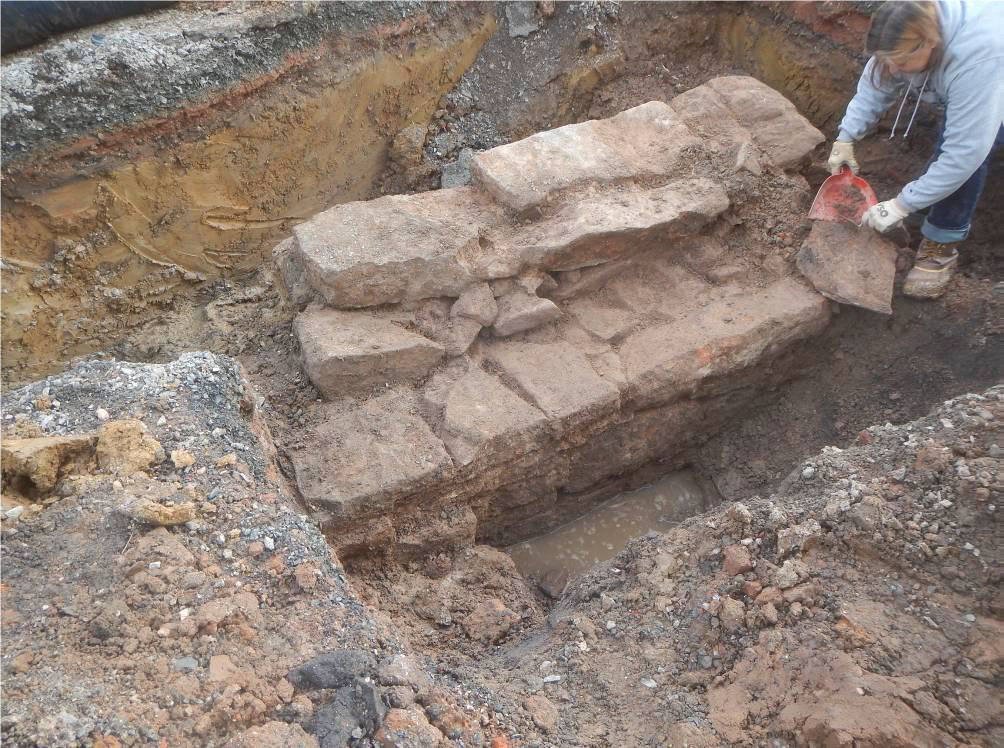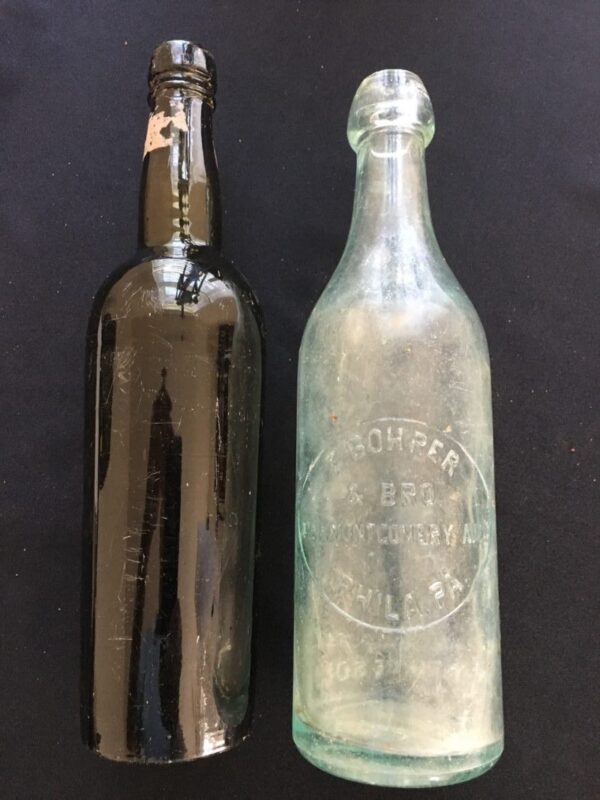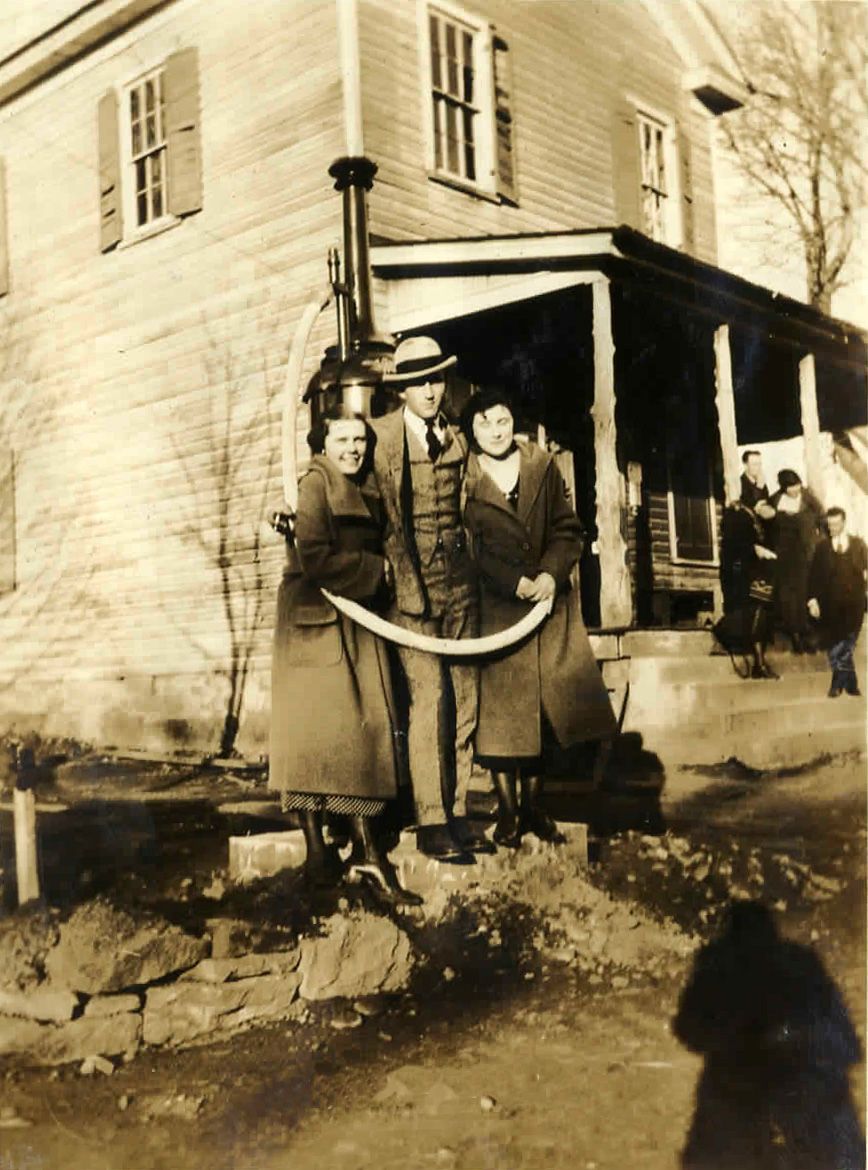The Seneca Store first opened it’s doors in 1901. It served the community until its closing in 2010. The store was rehabilitated in 2019 by Montgomery Parks’ Facilities Management staff of professional carpenters, electricians, plumbers and other highly trained tradespeople.
Courtesy Anne Allnutt Collection
History of the Seneca Store
The gable-front, two-and-a-half story general store was constructed in 1901 by Frederick A. Allnutt. The Seneca Store became a well-known destination and included the town post office and gas station. The store remained in the Allnutt family until 1965, when employee Raymond E. Poole took over the business. The Poole family continued to operate the store specializing in goods and services for local equestrian, hunting and farming communities, selling everything from animal feed and equipment to candy and carry-out food. Montgomery Parks acquired the property, and surrounding buildings in 1972, When the Poole’s Store closed in 2010, it had earned the distinction of being the oldest continuously operating general store of this type in Montgomery County.
Rehabilitation of the Store
The store and site rehabilitation included
- Restoring the store’s historic appearance with the original tongue and grooved ceiling, and new or restored wood floors and shelving on the interior
- Installing new mechanical, electrical and plumbing systems
- Making structural upgrades
- Adding a one-story, 300-square-foot rear kitchen and staff restroom
- Adding sidewalks and six parking spaces behind the store
- Adding an accessible parking space, aisles, and ADA ramp to the store.
The rehabilitation was supported by the State and Montgomery County, including state bond bill funding, a grant from the Maryland Heritage Areas Authority, and money from the Parks Capital Improvements Programs’ Restoration of Historic Structures fund.
Archaeological Excavation
Excavation of the stone feature, remnants of an 18th-century mill
Montgomery Parks was required to conduct archaeological testing wherever construction excavations were planned at this site. During the archaeological investigation, staff discovered a large archaeological feature buried adjacent to the store. Montgomery Parks’ archaeology team, in conjunction with a consultant, and volunteers, removed roughly 60,000 pounds of dirt to uncover an 18th-century stone mill wheel pit. The discovery is unique in Montgomery County. Although there are remnants of other 18th-century mills, few have such intact mill wheel pits. Measuring approximately 16’ x 16’ x 4 1/2’, the pit originally held a wooden wheel which, when water flowed over it, powered the grinding equipment inside the mill. The mill was demolished possibly to make way for the store. In addition to the wheel pit walls, 2,000 artifacts were found in the excavated area including an ink well, snuff bottles, and a Jamaica Ginger bottle from the mid-19th century. Other artifacts include, parts of an 1850s potbellied stove, and a Victorian Era porcelain doll. The doll has been identified as a Frozen Charlotte, popular from the 1850s-1920s, which was used to warn children of the dire effects of not dressing properly for cold weather.
Artifacts discovered at the Seneca Store site



